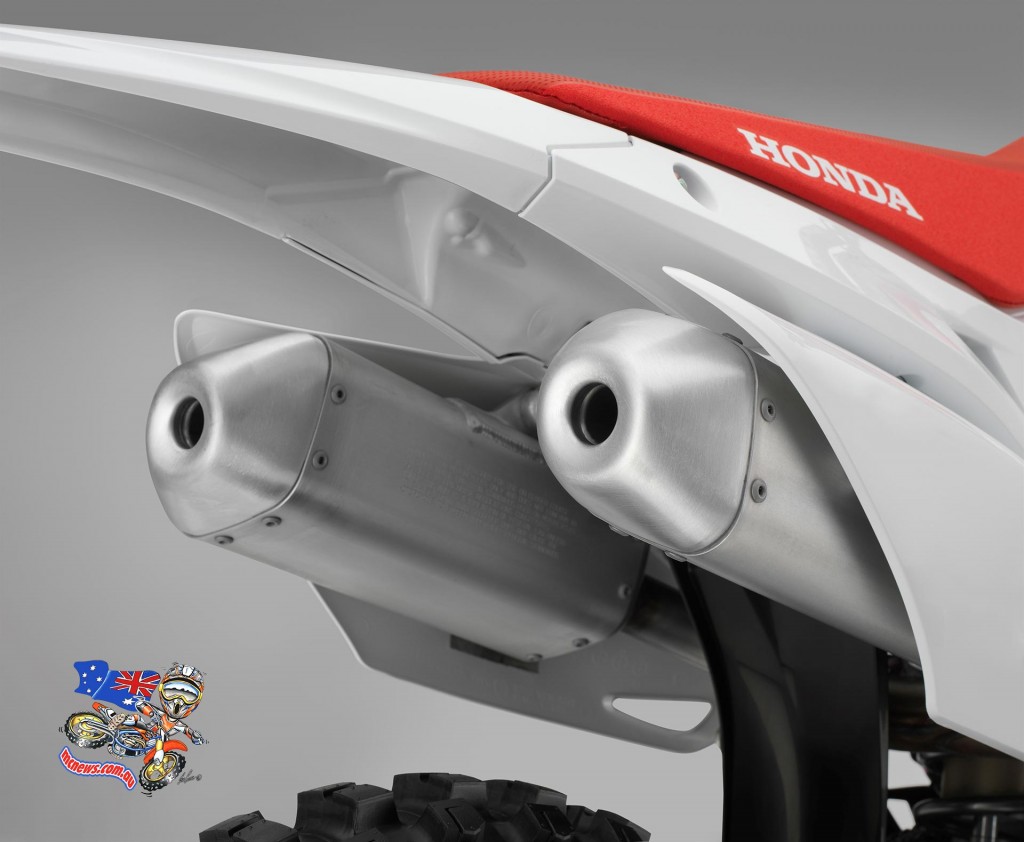2016 Honda CRF450R
The 2016 Honda CRF450R receives revised 48mm KYB Pneumatic Spring Forks, with changes in dimension, outer tube rigidity and damping control, plus improved adjustment range. Likewise the KYB rear shock features new damping rates and greater adjustability, with its Pro-Link ratio optimised. Subtle steering geometry changes combine with the upgraded suspension performance to enhance handling, stability and usability – all are derived from Team HRC’s race programme.
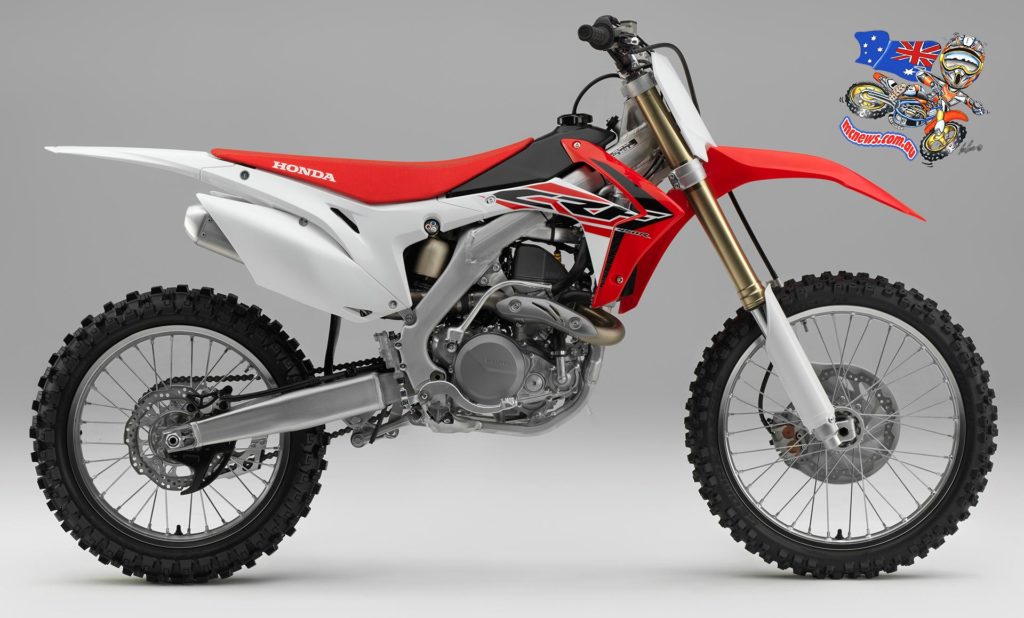
Since its introduction in 2002, the Honda CRF450R has combined usable power with total control, defining the word “balance” from a rider’s perspective, and allowing professional/amateur racers and hobby enthusiast alike to extract maximum performance both from themselves and their machine. It has proven itself a big hitting package at all levels, while its reliability, longevity and build quality have set the benchmark.
And it has constantly evolved; every single model year since its inception has delivered updates from Honda’s busy competition program around the world. In 2013 it featured a brand new mass-centralised frame built around KYB air suspension USD front forks, a major step change in development focused on assisting the rider to cut super-fast lap times and turn with less effort, on the ground and in the air.
The 14YM CRF450R featured an array of detail changes to the suspension, and a significant boost to top-end engine performance, driven by Team HRC’s hard-won knowledge. The 15YM featured updates that made the CRF450R – out of the crate – about as close as it’s possible to get to the feel of a Factory MX1 racer and, in Europe, demand for the machine outstripped supply. It sold out completely.
Focus for the 2016YM CRF450R centres around upgrades to the front and rear suspension and changes in steering geometry – again driven by Team HRC’s experience at the sharp end of competition.
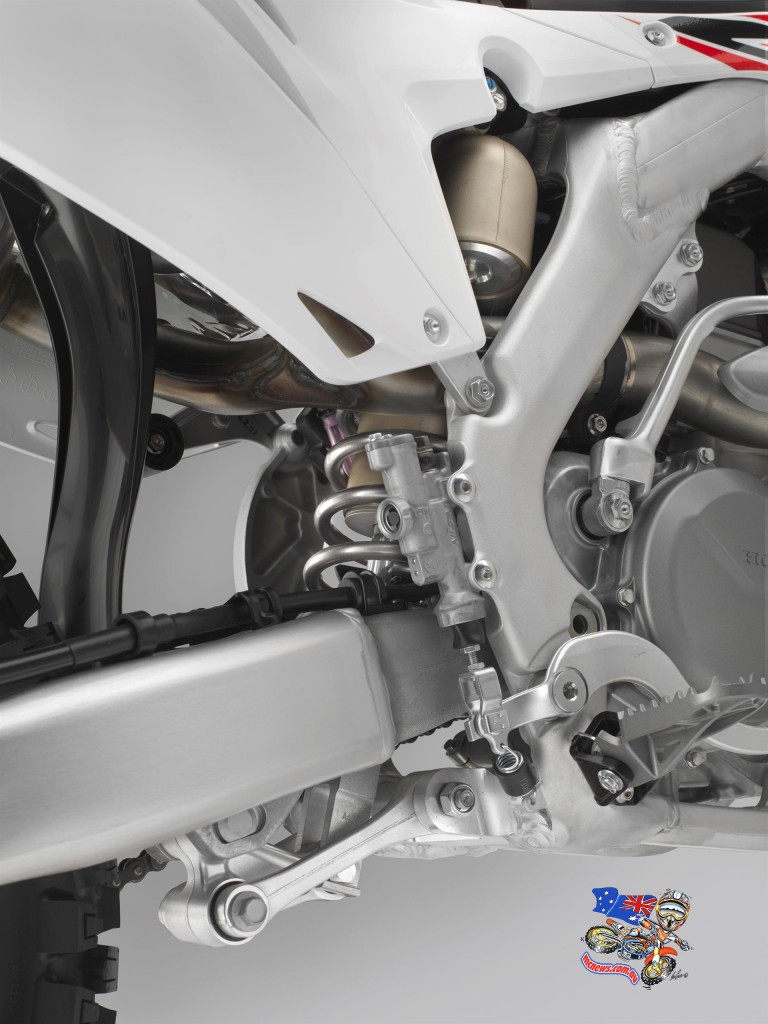
Having consistently re-written the rules of front-end feel the 48MM KYB Pneumatic Spring Forks (PSF2) units have received updates to improve handling, stability and front/rear suspension balance; stroke remains the same but the forks are longer, with increased outer tube rigidity.
Both compression and rebound damping rates are firmer to maintain control towards the point of bottoming out and the adjustability is increased. The rear shock too has more rebound damping in the middle-upper range of its stroke, plus works a new Pro-Link ratio. It also has a wider choice of adjustments.
The new suspension setup also drives subtle changes to the steering geometry – collectively with the aim of improving handling, feel and usability from a rider’s perspective. Other updates include a revised footpeg design and a new chain roller, more compact in size.
The 15YM CRF450R featured improved power delivery, rear-wheel traction from low-rpm up and increased peak output thanks to an HRC-spec cylinder head, exhaust pipe/mufflers and PGM-FI Dual Fuel settings. It also gained the 3-way Engine Mode Select Button (EMSB) that offers a choice of 3 riding modes for the rider to select from the right side of the handlebar. Mode 1 delivers the standard combination of ECU maps, Mode 2 serves up silky-smooth throttle control and Mode 3 returns aggressive, all-out response and power. The engine is unchanged for 2016.
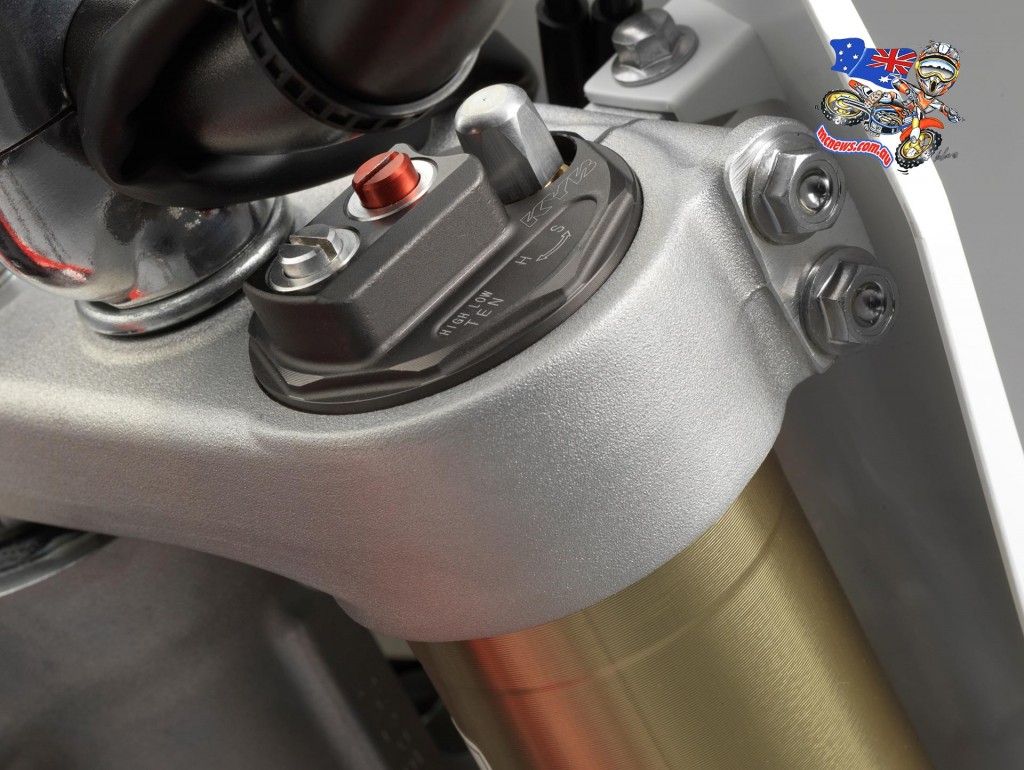
The sixth generation 9.35kg aluminium twin-beam frame was designed from the outset around the 48mm KYB PSF2, working with the improved suspension performance (compared to steel springs) to deliver superb front tyre side-grip and turning ability.
And the PSF2s really build their advantage in directional stroke transitions from compression to rebound. To enhance both handling, suspension balance and stability they are now 5mm longer – stroke remains unchanged at 310mm – and feature increased outer tube rigidity just below the top yoke with a 54mm diameter (from 53.5mm).
Both compression and rebound damping forces have been increased for greater control under hard braking or when landing and the adjustment range increased from 4 click/rotate to 8 click/rotate. All adjusters are integrated into the Alumite fork caps, with high/low speed compression and high/low speed rebound damping separated on the left and right sides of each cap. Preload is adjusted via a Schrader air valve.
The compact KYB rear shock features increased rebound damping and slightly less compression, plus a new Pro-Link leverage ratio. Stroke is set at 133.5mm, with 315mm axle travel. The adjusters for high/low speed compression and rebound damping are concentrated above the reservoir for easy access.
The adjustment in fork length and shock linkage combine to make subtle – but important – changes to the steering geometry. Rake goes from 27.07° to 27°15′, with trail up 1mm to 117mm. All-up kerb weight remains 110.6kg.
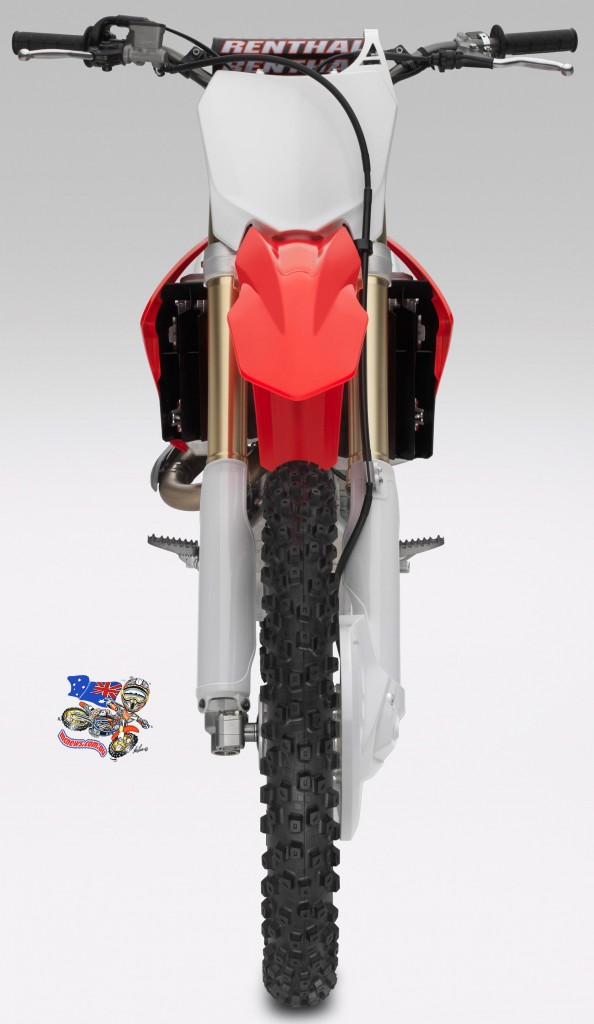
Focused packaging of equipment around the frame contributes to mass centralisation; all of the electrical components – ECU, condenser, regulator and wiring harness – are lightweight and centrally located below the throttle body.
The CRF450R’s bodywork maintains Honda’s man maximum/machine minimum ethos that’s built around a rider’s needs, first and foremost. Efficient riding ergonomics are at the heart of the CRF450R shape.
In support of this the shrouds, side covers, seat and fuel tank offer a slim, smooth and continuous transition allowing the rider a great deal of freedom and flexibility of movement. The CRF decals and detailing mirror the factory racers’ look closely. Black radiator grills are employed in a hard-to-clean area. A simplified fuel hose design helps with maintenance; fuel capacity is 6.3 litres. Detailed improvements to the footpegs and their mounts make it much harder for close-packed mud to jam the footpeg in an ‘up’ position.
A 260mm wave-pattern disc delivers improved heat dissipation, power and feel from the two-piston brake caliper working it; a matching 240mm wave-pattern disc and single-piston caliper is at the rear. The fork protectors and two-piece disc cover are finished in White, while the front and rear brake guides are Black.
Lightweight aluminium rims, with directly attached spoke pattern layout reduce unsprung weight; the front is a 21 x 1.6in, the rear a 19 x 2.15in. Both wear Dunlop MX52F/MX52 tyres.
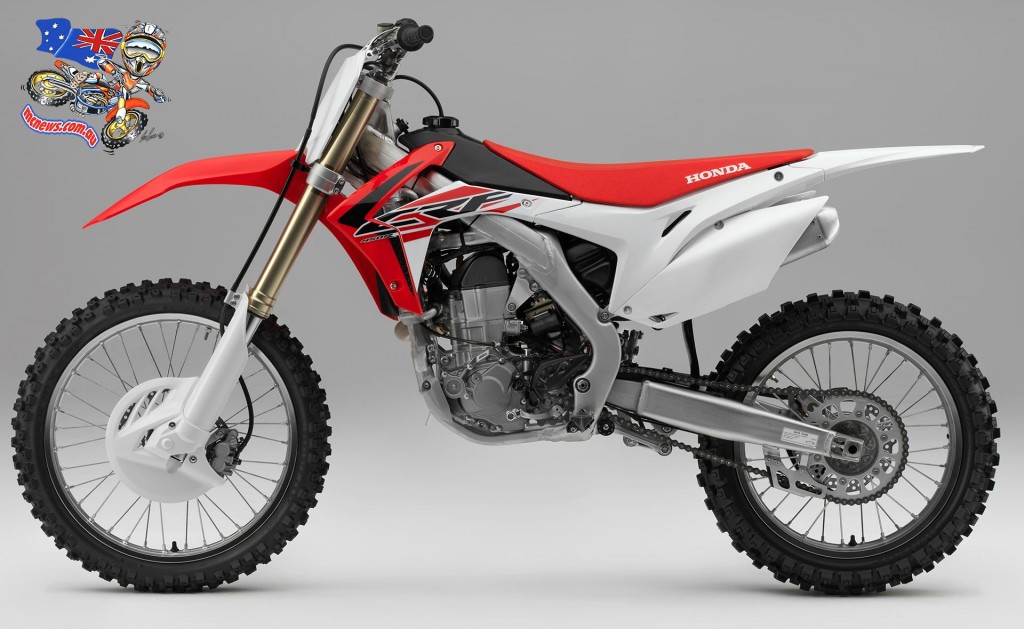
The 2016YM CRF450R uses exactly the same specification 449cc engine as the 15YM. Last year’s extensive attention by HRC resulted in increased power and torque off the very bottom with a smoothed, linear delivery through the middle plus increased peak output and extra rpm at the top end. This gave the rider confidence to get on the gas early, pick up consistent drive on and through the turn with extra rpm up top to reduce gear changing.
Bore and stroke is set at 96mm x 62.1mm, with 36mm inlet valves and 31mm exhaust valves. Compression ratio is 12.5:1, peak power is 39.5kW @ 9,000rpm with maximum torque of 48Nm arriving at 7,000rpm.
The 4-valve Unicam cylinder head and exhaust are chiefly responsible for the engine’s spectacular all-round performance and are built to the specifications raced by HRC, with exhaust ports that exit to the right, rather than left. This allows use of a shorter exhaust pipe; the twin exhaust mufflers also feature a large internal diameter and PGM-FI Dual Fuel injection matches the engine’s increased efficiency. The 46mm throttle body use a return spring that delivers a light – therefore less fatiguing – action.
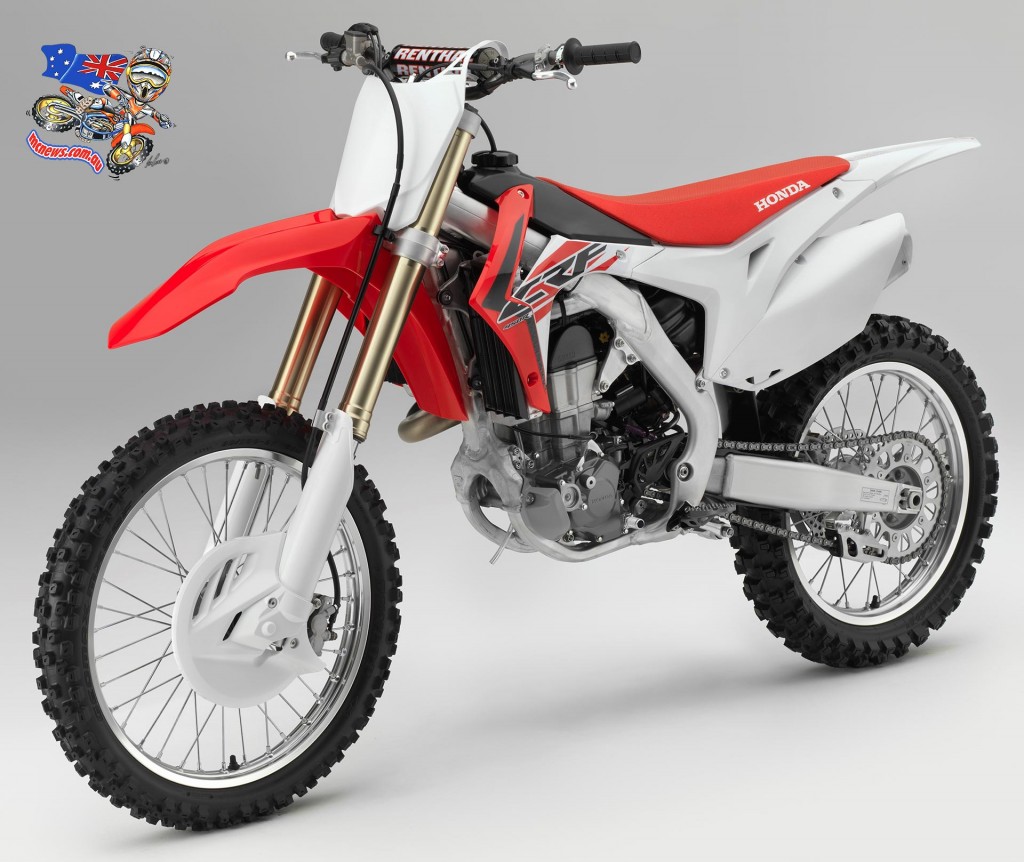
For durability every gear except first is manufactured from Nickel Chrome Molybdenum. It is 10% stronger than Steel Chrome Molybdenum (SCM) material with no weight penalty. The chain roller diameter has decreased, from 38mm to 34mm.
What makes the CRF450R’s engine so usable is not simply its fluid power and torque delivery; Honda’s EMSB is the key that unlocks complete and instant adaptability at the rider’s control. This is a game changer for the average racer; rather than setup during the week and hope for the best (or take a laptop to the track) the rider – depending on conditions – just has to stop with the engine at idle and press and hold the button for just under a second to select the next map in sequence.
A highly visible LED built into the lightweight button signals the map in use with a quick press and number of subsequent flashes. If a new map is selected the choice is also confirmed to the rider.
Mode 1 uses the standard combination of ignition and fuelling maps to present a balanced power and torque delivery. Mode 2 is designed for use in slippery, muddy conditions and is all about throttle control, giving easy-to-manage feel that hunts out every last shred of traction. Mode 3 hits all-out hard with aggressive and responsive power delivery to drive through deep, soft sand. Mode 2 and 3 can be further tailored via the existing HRC setting tool for mapping hardware and software.
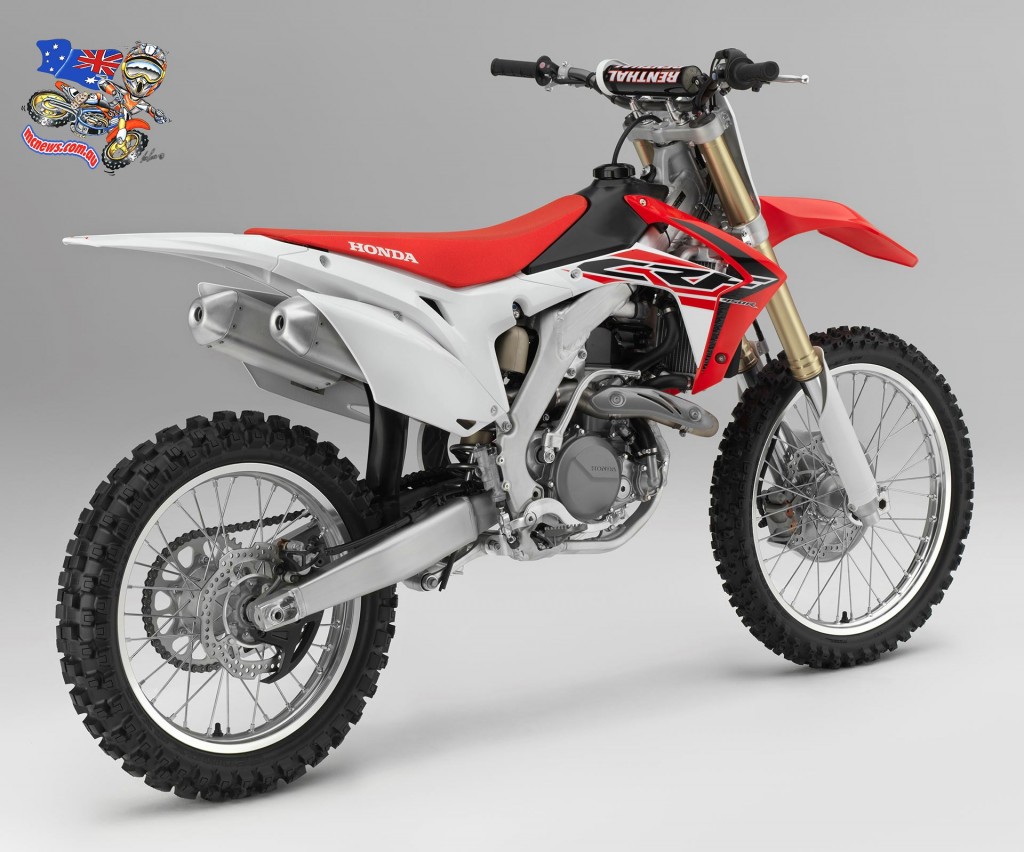
2016 Honda CRF450R Technical Specifications
ENGINE | |
Type | Liquid-cooled 4-stroke single cylinder uni-cam |
Displacement | 449.7cc |
Bore ´ Stroke | 96.0mm x 62.1mm |
Compression Ratio | 12.5 : 1 |
Max. Power Output | 39.5kW @ 9,000rpm |
Max. Torque | 48.0Nm @ 7,000rpm |
FUEL SYSTEM | |
Carburation | Fuel injection |
Fuel Tank Capacity | 6.3 litres |
ELECTRICAL SYSTEM | |
Ignition | Full transistor |
Starter | Kick |
DRIVETRAIN | |
Clutch Type | Wet multiplate |
Transmission Type | Constant mesh |
Final Drive | Chain |
FRAME | |
Type | Aluminium twin tube |
CHASSIS | |
Dimensions (L´W´H) | 2,194mm x 827mm x 1,274mm |
Wheelbase | 1,494mm |
Caster Angle | 27° 15′ |
Trail | 117mm |
Seat Height | 955mm |
Ground Clearance | 332mm |
Kerb Weight | 110.6kg |
SUSPENSION | |
Type Front | Kayaba 48mm inverted PFS2 (310mm stroke) |
Type Rear | Kayaba monoshock using Honda Pro-Link system (315 stroke, 133.5mm axle travel) |
WHEELS | |
Type Front | Aluminium spoke |
Type Rear | Aluminium spoke |
Tyres Front | 80/100-21 Dunlop MX52F |
Tyres Rear | 100/90-19 Dunlop MX52 |
BRAKES | |
Front | 260mm hydraulic wave disc |
Rear | 240mm hydraulic wave disc |
All specifications are provisional and subject to change without notice.
